Ossian’s Grave, Waterfoot and Ardclinis

It wasn’t my intention to be spending the day walking around memorials to the dead but it ended up being a very interesting outing nonetheless.
Looking at maps and the weather forecast, as it was a pretty wet day, I decided to head up the Antrim coast. Ossian’s grave looked like an interesting first stop.
Couple of tips for those who want to visit;
- Don’t use Apple Maps. It’ll lead you to a house in the town.
- If using Google Maps don’t go up the final road. It’s a gravel, windy path that is a nightmare to turn the car. Getting back down was a hairy experience of sliding in mud and scraping off the cars underbelly.
- It’s a steep enough path up to the stones if you aren’t attempting to drive it. So wear good boots!
On a good day the views from here would be stunning. As it was got a taster.
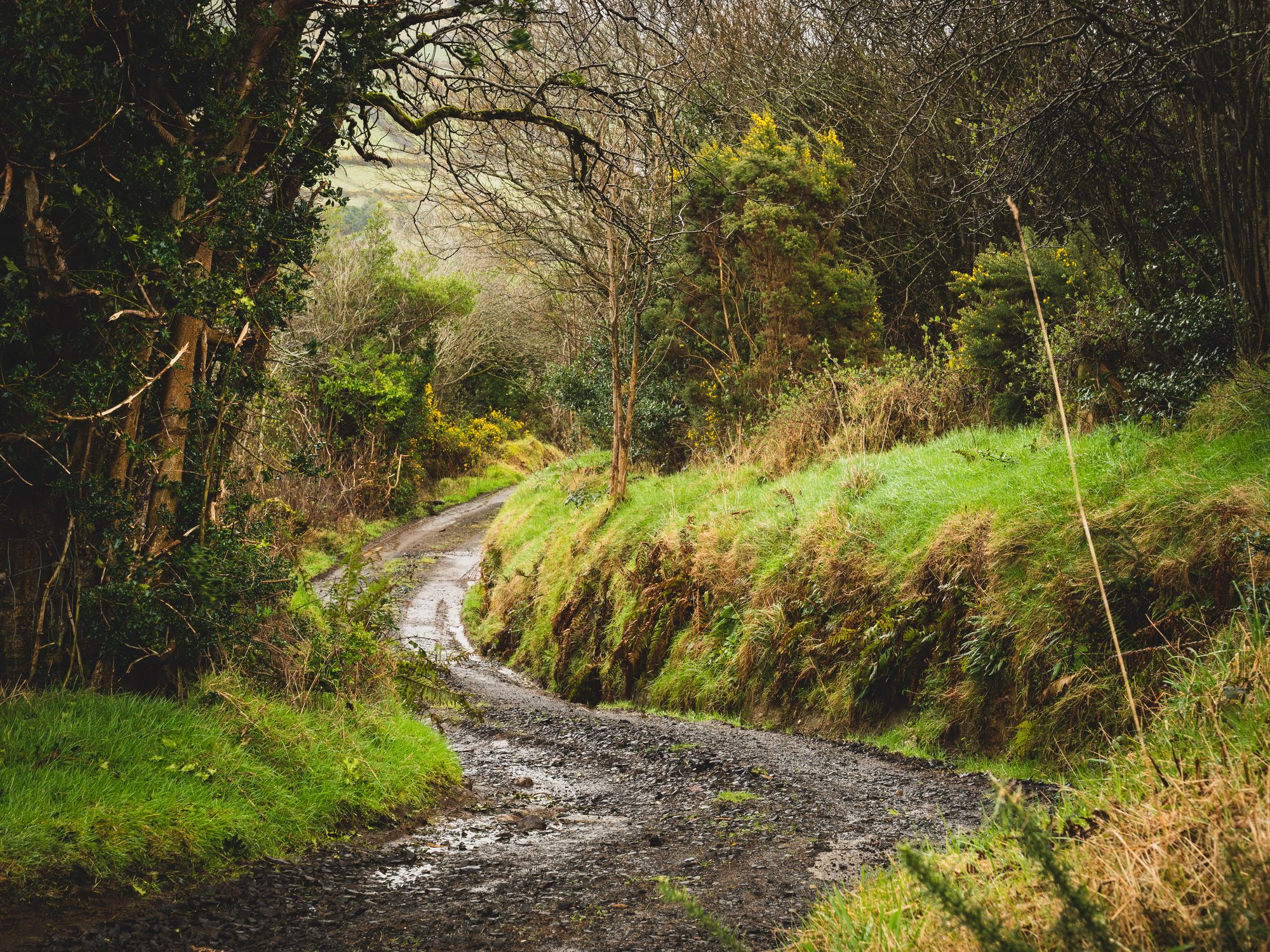
The name Ossian seems to come from Scotland, however in Ireland the myth is based on Oisín. This is an interesting story in itself, with Ossian being popularised by the Scottish poet James Macpherson who apparently discovered the poems of Oisín.
It seems the works were largely his own imagination and Irish scholars were not best pleased. The term Ossianic ballads refers to genuine late Gaelic poems that form part of the common Ulster Scots tradition and should not be confused with the romanticised epics of “Ossian.”
Back in Ireland, according to legend, Oisín was the son of the great hunter and warrior Fionn Mac Cumhaill. That's the giant responsible for the Giants Causeway.
Oisín fell in love with Niamh, a beautiful woman from the Otherworld, and accompanied her to her home in Tír na nÓg ("Land of Youth"). He lived there for several years, but eventually grew homesick and returned to Ireland. On his return, he discovered that centuries had passed and everyone he knew was long dead.
After returning from Tír na nÓg to Ireland he encounters St. Patrick but refuses to convert, with no desire to give up the beliefs and traditions of his ancestors.
One day he was riding his horse when he came across a group of men trying to move a large boulder.
Oisín offered to help, but as he reached down to lift the boulder, his saddle girth broke, causing him to fall from his horse. The fall caused him to instantly age and he died soon after.
Now of course all this makes for a good story but it seems the court tomb dates back to Neolithic times. Still, nice to get lost a while in the stories of Giants and heroes.
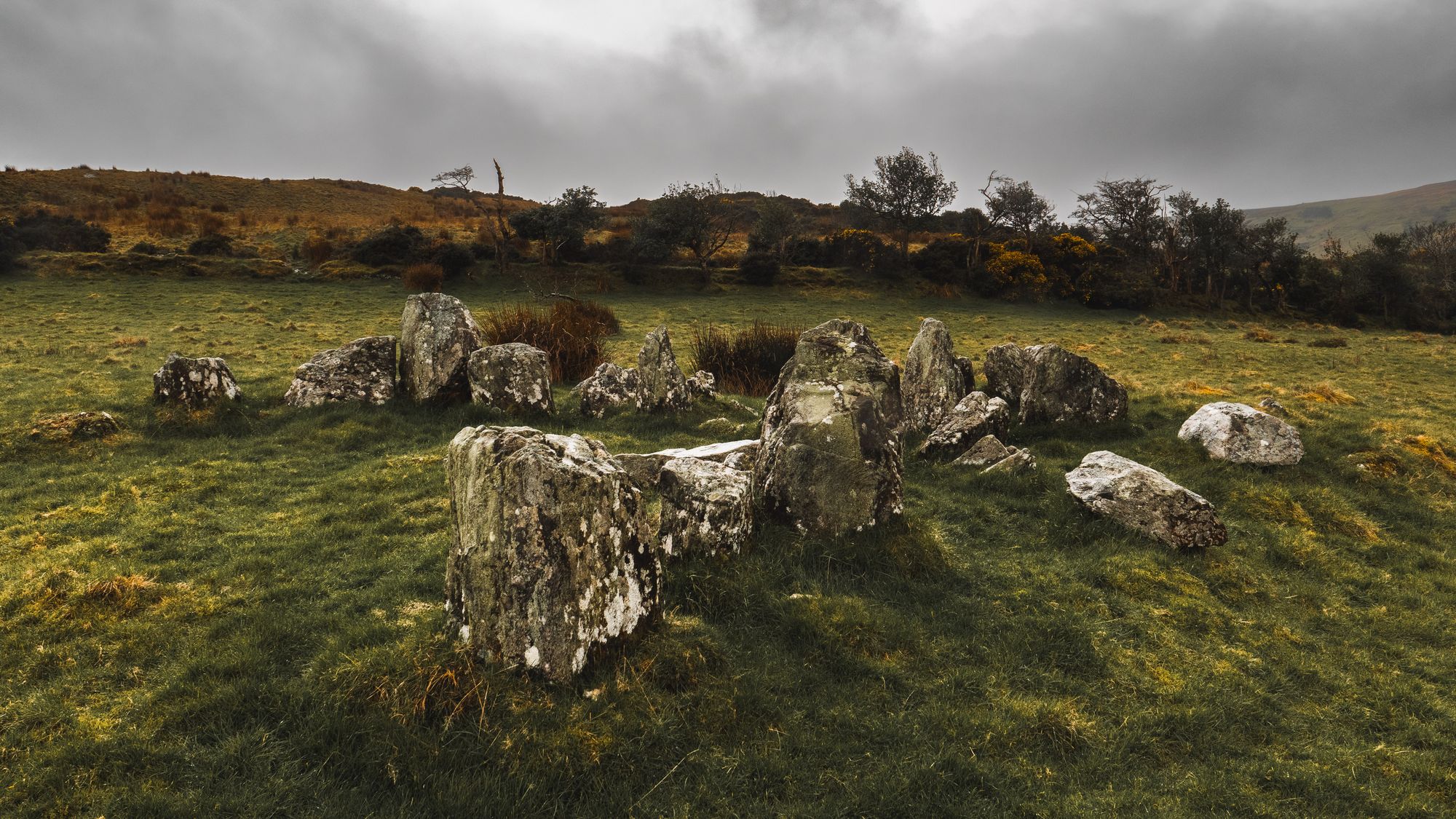
Ossian’s grave, or Lubitavish Court Tomb as it’s also known, is just outside Cushendall on the Antrim Coast, nestled amongst the Glens of Antrim. It is the best known of the estimated 18 court cairns found in County Antrim. The layout in this case is of a 'horned' cairn or 'lobster tomb', and it is believed to have been built in the early Neolithic period, about 3500 BC.
This is an area steeped in history, the Mountain the grave sits on (Tievebulliagh) was a Neolithic axe industry with its Axe heads being found across the British Isles.
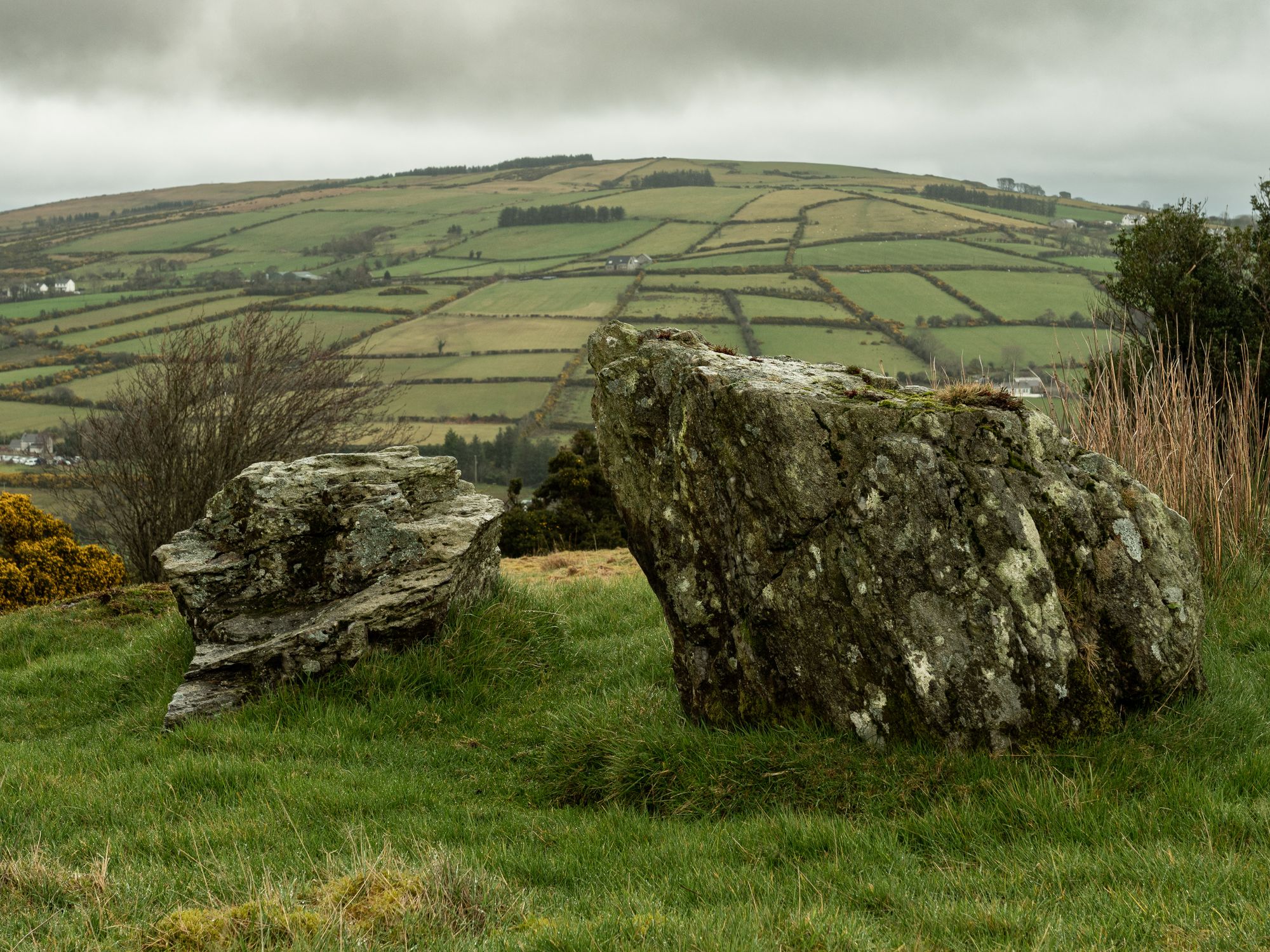





Northern Irish poet John Hewitt loved this place. He would often visit the Glens of Antrim, writing about the landscape and seeking refuge in the isolation of it all. In his memory a cairn was built next to the supposed resting place of the ancient Bard.

We stood and pondered on the stones
whose plan displays their pattern still;
the small blunt arc, and, sill by sill,
the pockets stripped of shards and bones.
The legend has it, Ossian lies
beneath this landmark on the hill,
asleep till Fionn and Oscar rise
to summon his old bardic skill
in hosting their last enterprise.
This, stricter scholarship denies,
declares this megalithic form
millennia older than his time –
if such lived ever, out of rime –
was shaped beneath Sardinian skies,
was coasted round the capes of Spain,
brought here through black Biscayan storm,
to keep men’s hearts in mind of home
and its tall Sun God, wise and warm,
across the walls of toppling foam,
against this twilight and the rain.
I cannot tell; would ask no proof;
let either story stand for true,
as heart or head shall rule. Enough
that, our long meditation done,
as we paced down the broken lane
by the dark hillside’s holly trees,
a great white horse with lifted knees
came stepping past us, and we knew
his rider was no tinker’s son.
John Hewitt - Ossian's Grave, Lubitavish, Co Antrim

On my way home I stopped off at Waterfoot, a small village on the coast. There’s a beautiful beach at Red bay, looking out across the Irish Sea. The weather had dried up a little, so I dandered round past the Church and graveyard to give the legs a good stretch, then back up the Bay towards the pier.







At the end of the bay you can see two caves. These have an interesting story. The one on the right was a hedge School, an illegal school which operated during the time of the penal laws when only Anglican schools were allowed.

Catholic children attended the school, notably James McDonnell who went on to found the Belfast Dispensary and Fever Hospital in 1792.
Beside the school lived Ann Murray who spent 50 years living in the cave until she died aged 100.
Ann was popular with locals and travellers passing by, who would stop for some of her illegal poteen.
The Belfast Vindicator newspaper wrote in 1847 that "few tourists to the causeway have passed by these caves without paying a passing visit to Nanny", as she was known to locals.
Just down the road I noticed a parking bay with info panel and thought I’d investigate. A ruined Church and Graveyard - Ardclinis.

A really beautiful setting , sat in a field by the coast with a small stream running up the side. The first church on this site may date back to the early Christian period. We know that “Ecclesia de Ardglanys” was valued at twenty shillings in the ecclesiastical taxation of 1306-1307, but other than that, its history is obscure. There is a link to its founding by St MacKenna. In the past there were several large stones by the roadside, known as MacKenna’s chair.
These were reputed to have been blessed by this saint, so that any weary traveller resting on them would arise refreshed, ready for their onward journey.
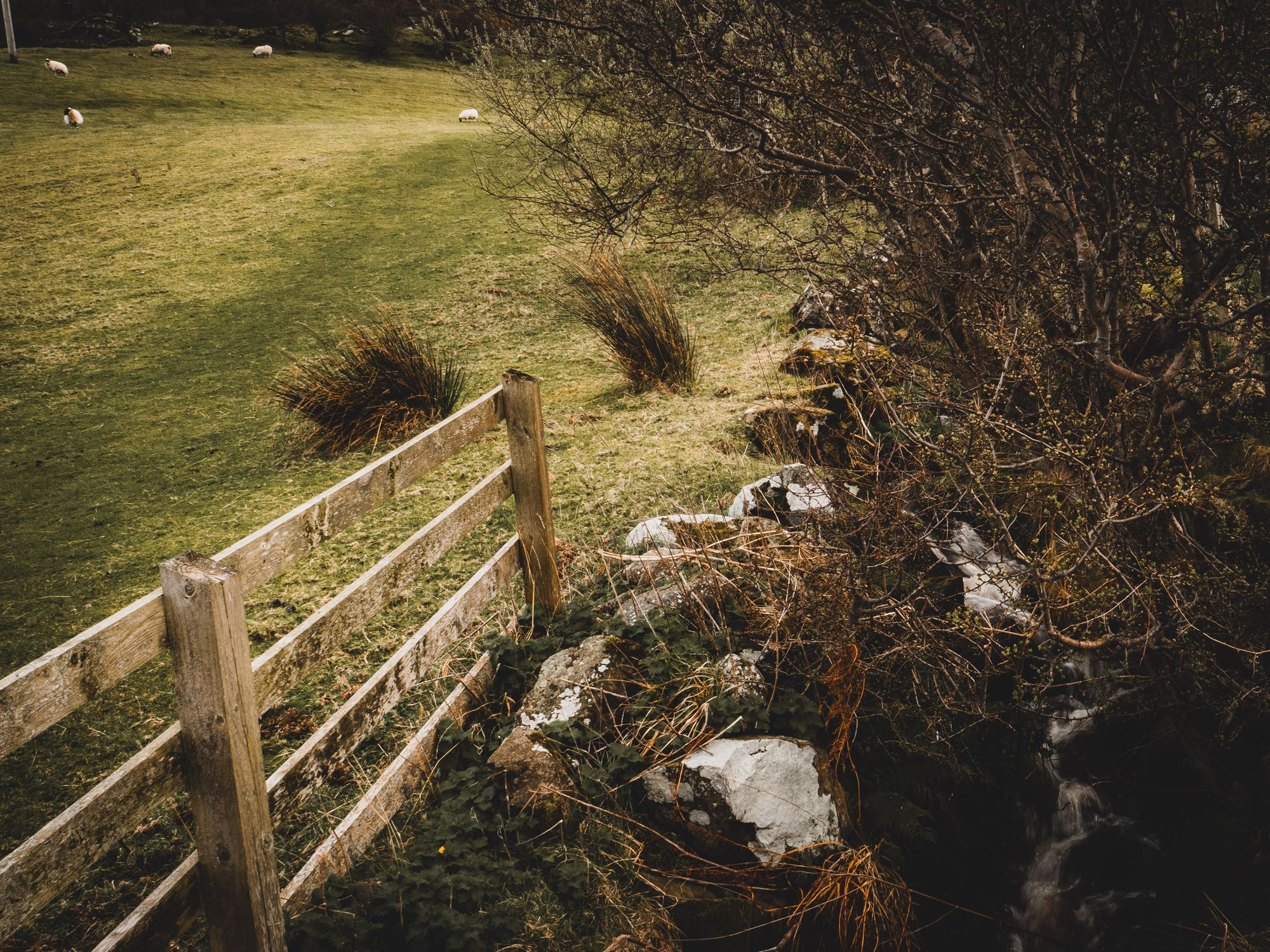





Several Hawthorn trees have grown up in the grounds of the old graveyard. One in particular had stones placed carefully around its base, a fairy tree. On its branches offerings or tokens for good luck.
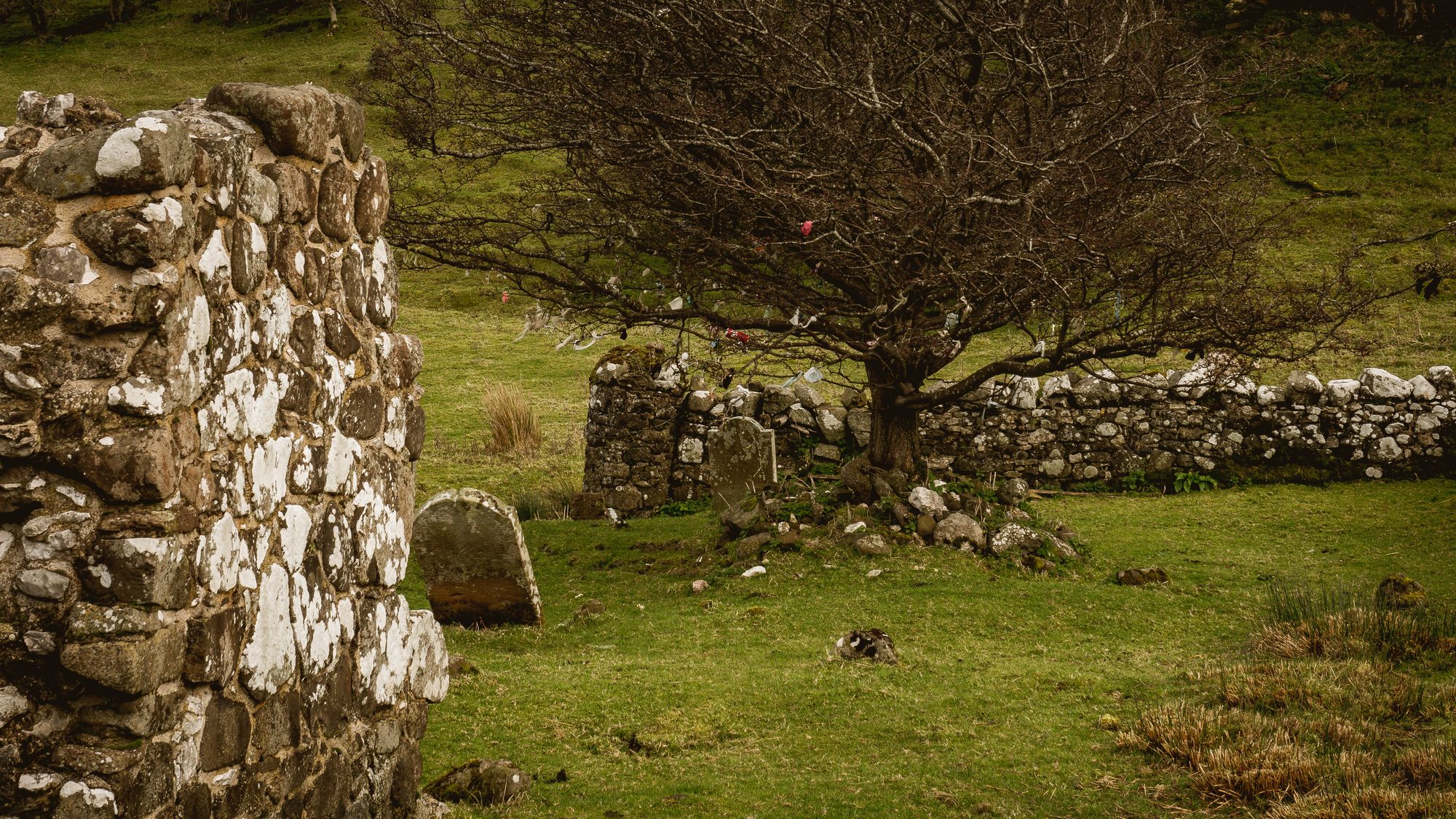
The Hawthorn plays a significant role in Irish folklore, a solitary tree is regarded as a place where the fairy folk gather. If you cut a fairy tree down then bad luck will befall you. You’ll see single trees in farmers fields throughout Ireland. The superstition remains.
All in all a good and educational day out.
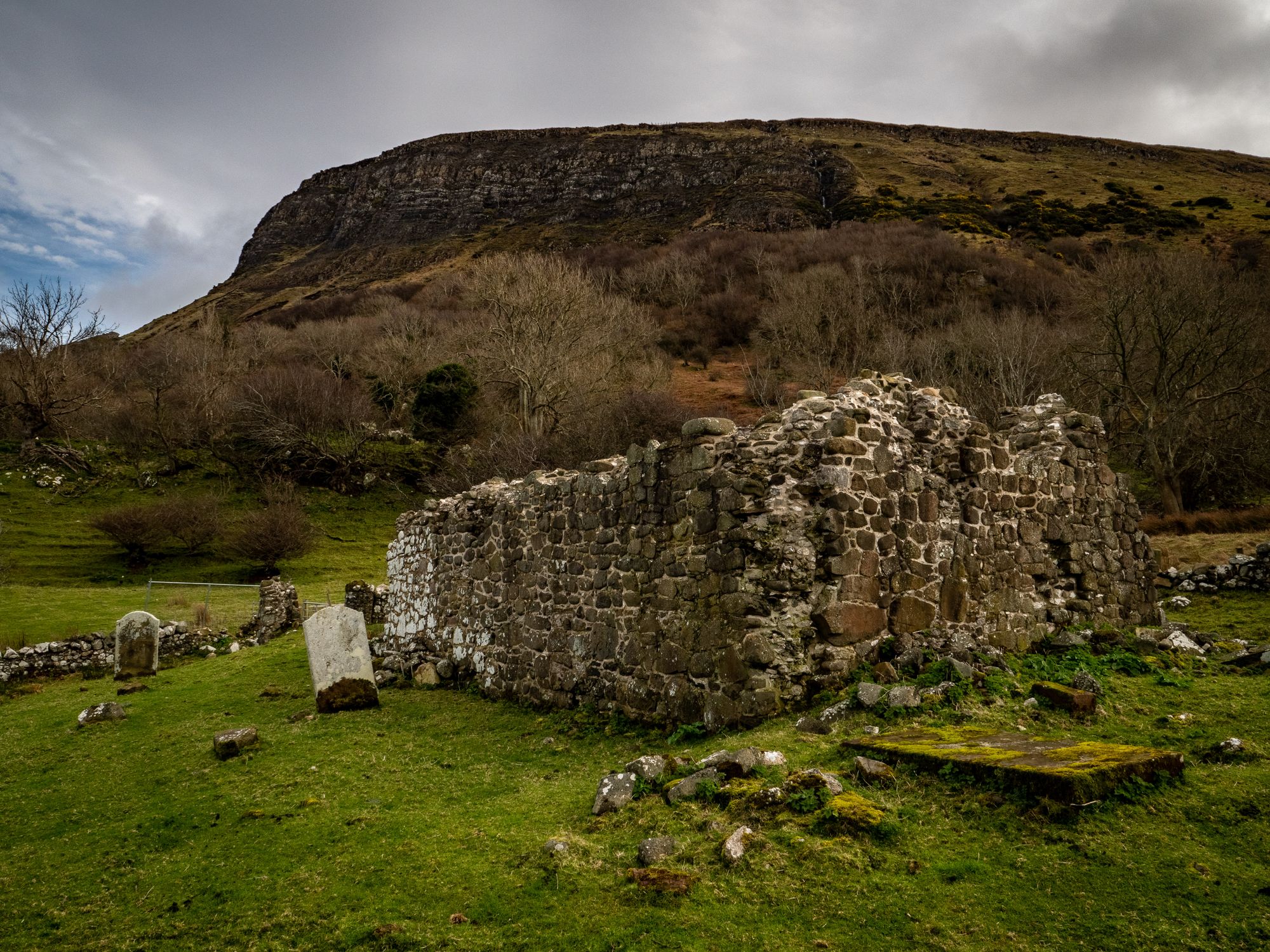
Member discussion